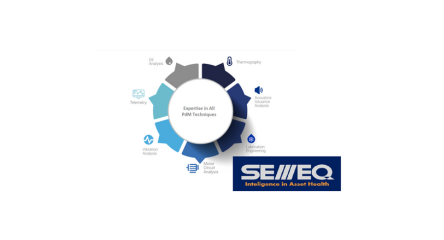Introduction
I began my professional career in 1988 after graduating from Villanova University with a BS in Mechanical Engineering. Initially working for the DuPont in Reliability and Maintenance, I completed my first Vibration Analysis class from IRD Mechanalysis in 1989. Since that initial assignment I have enjoyed working in a variety of industries, including Petrochemical, BioPharma, Food and Beverage, and Reliability Centered Maintenance (RCM) Consulting. My roles have included Reliability Engineering Manager, Maintenance Manager and Operations Manager. I am a registered Professional Engineer in the State of California and hold an MBA from the Wharton School of Business.
The advent of wireless monitoring technology (now referred to as “IoT”) promised exciting benefits to the world of machine health monitoring, but has been fraught with three barriers to widespread adoption: (1) sensor cost; (2) batteries; and (3) the prior investment in PdM programs.
Wireless Vibration Monitoring with Battery-Powered Devices
The benefits of wireless monitoring can be boiled down to a simple premise—optimizing maintenance resources to maximize uptime and reduce costs. Real-time awareness lets you direct resources when and where they are needed. By detecting machine damage and performance deterioration at an early stage, plant personnel are able to improve maintenance efficiency and effectiveness by planning and scheduling smaller repairs before they evolve into catastrophic issues. Overall maintenance costs are also lowered by not performing time-based maintenance and inspections on machines that are operating without defects.
To date, expensive and complex battery-powered monitoring devices have eroded much of the potential savings. High upfront capital expenses, complicated integration and installation processes, and ongoing maintenance result in a steep total cost of ownership.
Part of that ongoing maintenance is due to the batteries in the devices themselves. In a real-world plant environment, a battery-powered device reporting data at a reliable cadence probably only lasts two years, maybe less. Moreover, in efforts to conserve battery life, these solutions will heavily “duty-cycle” transmission, which means that they do not provide the “real-time” data often associated with IoT solutions. So, with a promise of real-time data to optimize maintenance resources, battery-powered devices wind up providing sporadic data that actually add events to your maintenance schedule!
For these reasons, typical plants can only afford to outfit a small percentage of its machinery with such solutions. The balance of plant—~80-90% of machinery—is relegated to the traditional methods of manual, predictive and / or preventive maintenance rounds.
Wireless Vibration Monitoring with Everactive Technology
So, you can imagine my excitement when I met Everactive, a company whose technology offers a battery-free and continuous approach to wireless monitoring, all for a reasonable service fee. When I joined the team, the company had already proven its model in steam trap monitoring and was developing a machine health monitoring solution.
Building on decades of truly innovative circuit-level R&D, the concept is simple: always-on wireless devices that generate power from their surroundings. The implications are profound. With multi-sensor devices that continuously stream data and never require batteries, plant managers have an explosion of new information at their fingertips. With a services-only business model, the cost-benefit analysis is a no-brainer.
With the Machine Health Monitoring solution (MHM), Everactive brings its technology to the world of vibration analysis. The company’s core chip technology serves as the foundation of a sensor device that integrates a triaxial accelerometer, ambient temperature sensor, remote temperature sensor, and magnetic field sensor. That device wirelessly transmits all of that data over Everactive’s proprietary “Evernet” protocol back to an IoT gateway. Notably, the “non-line-of-sight” range between each sensor and gateway is about 800 feet. That’s 800 feet through the physical obstacles and interference scattered throughout industrial facilities. Those sensor readings are wirelessly transmitted every 60 seconds using the scarce amount of power generated from a thermoelectric generator sitting on a machine and/or a photovoltaic cell (that’s a warm motor or a dimly lit indoor facility!).
From a vibration standpoint, we run acceleration data through a Fast Fourier Transform (FFT) on the batteryless device to transform data from the time domain to the frequency domain and send the frequency domain data to the cloud for deeper spectral analysis. In our cloud interface, we display vibration velocity up to 1 kHz in inches per second – peak (IPS) for each of the three axes. For every 60-second sample, we also display the 9-highest FFT peaks for each of the three axes. The cloud interface also displays the stator excitation frequency as measured by the magnetic field sensor, which is used to estimate running speed. For each monitored parameter, users can set thresholds that trigger cloud-based and email alerts. Users can then drill down into the data to further diagnose machine faults.
So, how do you use a vibration sensor that continuously streams vibration velocity up to 1 kHz? A trained vibration analyst can actually determine quite a bit by looking at vibration velocity data. Based on the spectral analysis of “vibration orders” (a multiple of running speed), analysts are able to diagnose fault conditions such as imbalance, misalignment, bent shafts, looseness, and resonance issues. Asynchronous vibration in that frequency range will also indicate later stage bearing failures.
We like to think of MHM 1.0 as a 24/7 screening tool—a supplement that lets you direct those expensive resources only when and where they are needed. With the pure services model and elimination of battery maintenance, MHM offers an extremely low total cost of ownership, making the cost-benefit analysis of balance-of-plant deployment a no-brainer. Everactive’s MHM lets maintenance teams have a finger on the pulse of the entirety of the plant’s machinery, reducing the likelihood of unexpected failures that threaten costly downtime and expensive maintenance events.





